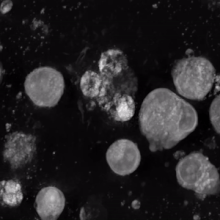

This article may be too technical for most readers to understand. Please help improve ittomake it understandable to non-experts, without removing the technical details. (September 2015) (Learn how and when to remove this message)
|

Megakaryocyte–erythroid progenitor cells (MEPs), among other blood cells, are generated as a result of hematopoiesis, which occurs in the bone marrow. Hematopoietic stem cells (HSC) can differentiate into one of two progenitor cells: the common lymphoid progenitor and the common myeloid progenitor. MEPs derive from the common myeloid progenitor lineage.[1] Megakaryocyte–erythroid progenitor cells must commit to becoming either platelet-producing megakaryocytes via megakaryopoiesis or erythrocyte-producing erythroblasts via erythropoiesis.[2][3] Most of the blood cells produced in the bone marrow during hematopoiesis come from megakaryocyte–erythroid progenitor cells.[4]

|
Myeloid blood cells and plasma
| |||||||||||||||||
|---|---|---|---|---|---|---|---|---|---|---|---|---|---|---|---|---|---|
| Hematopoiesis |
| ||||||||||||||||
| Myeloid tissue |
| ||||||||||||||||
| Other |
| ||||||||||||||||
This cell biology article is a stub. You can help Wikipedia by expanding it. |